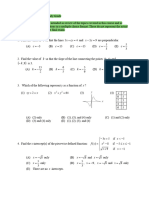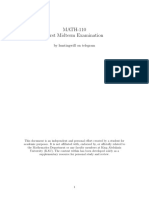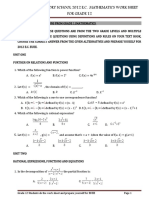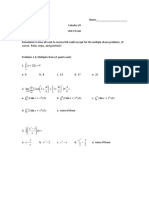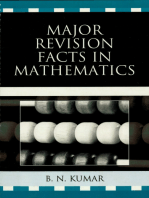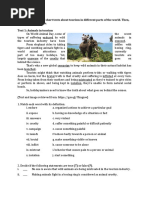Apznzazx3snelyiykha87fdhs58t1sfppmw2pjmc6f4kgzffxhzfobaq8jax0c0vtmnnbyn8uhg6m69rjllqiud09x0zzjihj4hhyvmrok3i718rmvn3y0cpkcrlr6ep9bqef Scc72 Imjdoz6w6pzvon1fbzd5hqzg4njca4myws2c i6o5mmqmomw6tbru3dyuqabaabpv44sipfycf
Apznzazx3snelyiykha87fdhs58t1sfppmw2pjmc6f4kgzffxhzfobaq8jax0c0vtmnnbyn8uhg6m69rjllqiud09x0zzjihj4hhyvmrok3i718rmvn3y0cpkcrlr6ep9bqef Scc72 Imjdoz6w6pzvon1fbzd5hqzg4njca4myws2c i6o5mmqmomw6tbru3dyuqabaabpv44sipfycf
Uploaded by
ibrahimchatila95Copyright:
Available Formats
Apznzazx3snelyiykha87fdhs58t1sfppmw2pjmc6f4kgzffxhzfobaq8jax0c0vtmnnbyn8uhg6m69rjllqiud09x0zzjihj4hhyvmrok3i718rmvn3y0cpkcrlr6ep9bqef Scc72 Imjdoz6w6pzvon1fbzd5hqzg4njca4myws2c i6o5mmqmomw6tbru3dyuqabaabpv44sipfycf
Apznzazx3snelyiykha87fdhs58t1sfppmw2pjmc6f4kgzffxhzfobaq8jax0c0vtmnnbyn8uhg6m69rjllqiud09x0zzjihj4hhyvmrok3i718rmvn3y0cpkcrlr6ep9bqef Scc72 Imjdoz6w6pzvon1fbzd5hqzg4njca4myws2c i6o5mmqmomw6tbru3dyuqabaabpv44sipfycf
Uploaded by
ibrahimchatila95Copyright
Available Formats
Share this document
Did you find this document useful?
Is this content inappropriate?
Copyright:
Available Formats
Apznzazx3snelyiykha87fdhs58t1sfppmw2pjmc6f4kgzffxhzfobaq8jax0c0vtmnnbyn8uhg6m69rjllqiud09x0zzjihj4hhyvmrok3i718rmvn3y0cpkcrlr6ep9bqef Scc72 Imjdoz6w6pzvon1fbzd5hqzg4njca4myws2c i6o5mmqmomw6tbru3dyuqabaabpv44sipfycf
Apznzazx3snelyiykha87fdhs58t1sfppmw2pjmc6f4kgzffxhzfobaq8jax0c0vtmnnbyn8uhg6m69rjllqiud09x0zzjihj4hhyvmrok3i718rmvn3y0cpkcrlr6ep9bqef Scc72 Imjdoz6w6pzvon1fbzd5hqzg4njca4myws2c i6o5mmqmomw6tbru3dyuqabaabpv44sipfycf
Uploaded by
ibrahimchatila95Copyright:
Available Formats
Worksheet D: (Topics 1.1 – 1.
6) Polynomial Review Name: Solutions
(
1. Let f ( x ) = x 2 x 2 + 4 ) ( x - 3) ( x -1) . Which of the following statements about the zeros of
3
f is correct?
(A) f has 8 distinct real zeros. Zeros: 𝑥 ' = 0 ⇒ 𝑥 = 0 multiplicity 2
(B) f has four distinct real zeros. 𝑥 ' + 4 = 0 ⇒ 𝑥 ' = −4 ⇒ 𝑥 = ±2𝑖 non-real
(C) f has three distinct real zeros and two non-real zeros. (𝑥 − 3)& = 0 ⇒ 𝑥 = 3 multiplicity 3
(𝑥 − 1) = 0 ⇒ 𝑥 = 1 multiplicity 1
(D) f has six distinct real zeros and two non-real zeros.
2. Let g ( x ) = 2 x 2 + 5x - 12 . On what intervals is g ( x ) ³ 0 ?
é 3 ù é 3ù æ 3ù é3 ö
(A) ê - ,4 (B) ê -4, ú (C) ç -¥, - ú and [ 4, ¥ ) (D) ( -¥, - 4] and êë 2 , ¥ ø÷
ë 2 úû ë 2û è 2 û
(")(") ($)(") ($)($)
3 $ " $
𝑔(𝑥) = (𝑥 + 4)(2𝑥 − 3) = 0 ⇒ 𝑥 = −4, <−
012
−−+
⏟−012
− −+
⏟−012
−−>
2 "% &
'
3. The polynomial function h has zeros of x = 3 (multiplicity of 2), x = -4 (multiplicity of 3), x = 2i and x = 5 - 3i .
What is the least possible degree of h ?
(A) 4 (B) 6 (C) 7 (D) 9
𝑥 = −2𝑖 and 𝑥 = 5 + 3𝑖 are also zeros The least possible degree of ℎ = ⏟
2 + ⏟
3 + ⏟
4 =9
()& ()"% *+*",-./
4. The graph of ℎ is shown above. Which of the following statements about ℎ is correct?
(A) The rate of change of ℎ is positive and decreasing.
(B) The rate of change of ℎ is negative and decreasing. because ℎ decreasing and concave down
(C) The function ℎ is negative and decreasing.
(D) The function ℎ is negative and the rate of change of ℎ is negative.
Worksheet D: Topics 1.1 – 1.6 Polynomial Review Created by Bryan Passwater
Solutions by Ted Gott tedg20776@gmail.com
(
5. Let k ( x ) = x 2 - 9 ) ( x + 3) ( x
2 2
+ 6 x + 9 ) . Which of the following statements about the zeros and multiplicities of
k is correct? 𝑘(𝑥) = (𝑥 + 3)(𝑥 − 3)(𝑥 + 3)' (𝑥 + 3)'
(A) k has zeros at x = -3 (multiplicity 5) and x = 3 . = (𝑥 + 3)0 (𝑥 − 3)
(B) k has zeros at x = -3 (multiplicity 4), x = -9 and x = 9 . (𝑥 − 3) = 0 ⇒ 𝑥 = 3 multiplicity 1
(𝑥 + 3)0 = 0 ⇒ 𝑥 = −3 multiplicity 5
(C) k has zeros at x = -3 (multiplicity 4) and x = 3 (multiplicity 2) .
(D) k has zeros at x = -3 and x = 3 (multiplicity 5) .
x g ( x)
AROC
-7 -13
1/2
-5 -12
4/2
-3 -8
5/2
-1 -3
6/2
1 3
6. Selected values of the polynomial function g are shown in the table above. Which of the following statements pairs
about g could be true?
(A) g is an odd function and the graph of g is concave down.
(B) g is an odd function and the graph of g is concave up. 𝑔(−1) = −3 = −𝑔(1) = −3 ⇒ odd
(C) g is an even function and the graph of g is concave down. increasing average rates ⇒ concave up
(D) g is an even function and the graph of g is concave up.
x -6 -4 -3 -2 2 b 6
f ( x) -4 -5 5 1 a 5 c
7. The table above shows values of the even function f at selected values of x . What is the value of a + b + c ?
(A) -7 (B) -6 (C) 0 (D) 7
even ⇒ 𝑓(−𝑥) = 𝑓(𝑥) 𝑓(−2) = 1 ⇒ 𝑓(2) = 1 ⇒ 𝑎 = 1 𝑓(−6) = −4 ⇒ 𝑓(6) = −4 ⇒ 𝑐 = −4
𝑓(−3) = 5 ⇒ 𝑓(𝑏) = 5 ⇒ 𝑏 = 3 𝑎 + 𝑏 + 𝑐 = 1 + 3 + (−4) = 0
Worksheet D: Topics 1.1 – 1.6 Polynomial Review Created by Bryan Passwater
Solutions by Ted Gott tedg20776@gmail.com
𝐆𝐫𝐚𝐩𝐡 𝐨𝐟 𝒈
8. The graph of the function g is shown above. Which of the following statements about g is correct?
(A) g is increasing at an increasing rate.
(B) g is increasing at a decreasing rate.
(C) g is decreasing at an increasing rate. because 𝑔 is decreasing and concave up
(D) g is decreasing at a decreasing rate.
𝐆𝐫𝐚𝐩𝐡 𝐨𝐟 𝒉
9. The graph of the function ℎ is shown above. Which of the following statements about ℎ is correct?
(A) ℎ is increasing at an increasing rate. because ℎ is increasing and concave up
(B) ℎ is increasing at a decreasing rate.
(C) ℎ is decreasing at an increasing rate.
(D) ℎ is decreasing at a decreasing rate.
𝐆𝐫𝐚𝐩𝐡 𝐨𝐟 𝒌
10. The graph of the function 𝑘 is shown above. Which of the following statements about 𝑘 is correct?
(A) 𝑘 is increasing at an increasing rate.
(B) 𝑘 is increasing at a decreasing rate. because 𝑘 is increasing and concave down
(C) 𝑘 is decreasing at an increasing rate.
(D) 𝑘 is decreasing at a decreasing rate.
Worksheet D: Topics 1.1 – 1.6 Polynomial Review Created by Bryan Passwater
Solutions by Ted Gott tedg20776@gmail.com
11. Let g ( x ) = 4 x5 - 2 x4 + 3x - 1 . Which of the following limit statements about the end behavior of g is correct?
(A) lim g ( x ) = -¥ and xlim g ( x ) = -¥ The 𝑥 0 term will dominate as 𝑥 decreases without bound
x®-¥ ®¥
and negative values raised to an odd power are negative.
(B) lim g ( x ) = -¥ and xlim
x®-¥ ®¥
g ( x) = ¥ As 𝑥 increases without bound, the positive values raised
to the odd power are positive.
(C) lim g ( x ) = ¥ and xlim
x®-¥ ®¥
g ( x ) = -¥
(D) lim g ( x ) = ¥ and xlim
x®-¥ ®¥
g ( x) = ¥
12. Let h ( x ) = -2 x ( x - 3) ( x + 4) .
2 3
Which of the following limit statements about the end behavior of h is correct?
(A) lim h ( x ) = -¥ and xlim
x®-¥ ®¥
h ( x ) = -¥ The leading coefficient of ℎ(𝑥) → −2𝑥(𝑥 ' )(𝑥 & ) = −2𝑥 1
The −2𝑥 1 term will dominate and as 𝑥 decreases without
(B) lim h ( x ) = -¥ and xlim
x®-¥ ®¥
h ( x) = ¥ bound or increases without bound, all values will be
negative.
(C) lim h ( x ) = ¥ and xlim
x®-¥ ®¥
h ( x ) = -¥
(D) lim h ( x ) = ¥ and xlim
x®-¥ ®¥
h ( x) = ¥
13. Let the polynomial f be an odd function such that f ( -4 ) = 5 is the location of a local minimum. Which of the
following statements must be true?
odd ⇒ 𝑓(−𝑥) = −𝑓(𝑥) which is
(A) f ( 4 ) = -5 is the location of a local minimum. graphically symmetric about the
(B) f ( 4 ) = -5 is the location of a local maximum. point (0,0). See graph to the right.
At the local minimum 𝑓 decreases
(C) f ( 4 ) = 5 is the location of a local minimum. then increases. Both points C and D
(D) f ( 4 ) = 5 is the location of a local maximum. have 𝑦 values greater than 5.
The symmetric point to (−4,5) is (4, −5). Both points E and F have 𝑦 values less than −5. 𝑓 increases then decreases so
there is a local maximum at 𝑓(4) = −5.
ì3x 2 + 1, if x < 4
h ( x) = í
î 4 x - 9, if x ³ 4
14. Let h be the piecewise defined function shown above. What is the average rate of change of h over the interval
0£ x £5?
(A) 2 (B) 4 (C) 6 (D) 15
ℎ(5) − ℎ(0) (4(5) − 9) − (3(0)' + 1) 11 − 1 10
AROC = = = = =2
5−0 5 5 5
Worksheet D: Topics 1.1 – 1.6 Polynomial Review Created by Bryan Passwater
Solutions by Ted Gott tedg20776@gmail.com
ì3x 2 + 1, if x < 4
h ( x) = í
î 4 x - 9, if x ³ 4
15. Let h be the piecewise defined function shown above. What is the average rate of change of h over the interval
4 £ x £ 6?
(A) –17 (B) 4 (C) 8 (D) 30
ℎ(6) − ℎ(4) (4(6) − 9) − (4(4) − 9) 15 − 7 8
AROC = = = = =4
6−4 2 2 2
𝐆𝐫𝐚𝐩𝐡 𝐨𝐟 𝒇
16. The graph of the polynomial function f is shown above. Which of the following could be the expression for f ?
(A) - x ( x + 2)( x - 3)
2
odd degree with negative leading coefficient because lim 𝑓(𝑥) = ∞ and
(→"3
(B) - x ( x + 2 )( x - 3) lim 𝑓(𝑥) = −∞. At 𝑥 = 0 and 𝑥 = 3 there are a zeros with multiplicity 2.
(→3
(C) - x2 ( x + 2)( x - 3)
2
(D) x2 ( x + 2)( x - 3)
2
() ( ) ( x − 7) . What are all the intervals where g ( x ) < 0 ?
3 4
17. Let g x = −2x x + 4
(A) ( -4, 0 ) only (")(")(")($) (")(")($)($) (")($)($)($) (")($)($)($)
" $ " "
(B) ( -4, 0) and ( 7, ¥) <−
0]−]1]
−−]2
−+⏟ 0]
−−]1]
−−]2
−+⏟−
0]−]1]
−−]2
−+⏟ 0]
−−]1]
−−]2
−>
"% 4 5
(C) ( -¥, - 4) and ( 0, ¥ )
(D) ( -¥, - 4) , ( 0, 7 ) , and ( 7, ¥ )
Worksheet D: Topics 1.1 – 1.6 Polynomial Review Created by Bryan Passwater
Solutions by Ted Gott tedg20776@gmail.com
Directions: A graphing calculator is needed for problems 18 – 21.
()
18. Let f x = −1.352x + 3.051x − 1.964x + 6.542 , where −1 ≤ x ≤ 2 . Which of the following statements about f
5 4 2
is correct on the closed interval −1 ≤ x ≤ 2 ?
relative maxima
(A) f has two relative minima and two relative maxima.
(B) f has three relative minima and three relative maxima.
(C) f has one relative minimum and one relative maximum.
(D) f has two relative minima and four relative maxima. relative minima
()
19. Let g x = 3.526x 4 − 5.152x 3 + 0.789x 2 − 2.665x − 4.152 , where −1 ≤ x ≤ 2 . Which of the following statements
about g is correct?
(A) g has a local minimum at x = 1.143 .
(B) g has a local minimum at x = −7.842 .
(C) g has a local maximum at x = 1.143 .
(D) g has a local maximum at x = −7.842 .
20. For the function g in problem 19, what is the complete interval where g is decreasing over the closed interval
−1 ≤ x ≤ 2 ?
(
(A) 1.143, 2 )
(B) ( −1, 1.143) See graph in #19
(C) ( −0.653, 1.143)
(D) ( −0.653, 1.782 )
()
21. Let h x = 2.351x − 7.662x + 2.117x + 1.302 , where −1 ≤ x ≤ 3 . Find all zeros of h .
3 2
ℎ(𝑥) = 0 ⇒ 𝑥 = 2.8795 … ,0.6675 … , −0.28808 …
Worksheet D: Topics 1.1 – 1.6 Polynomial Review Created by Bryan Passwater
Solutions by Ted Gott tedg20776@gmail.com
Directions: Complete each of the following problems. Be sure to show all necessary work to earn credit.
22. Factor the following expressions completely.
a) (x 2
- 9)( x2 - 3x -18) b) 3x - 2 x - 8
2
c) 4x − 10x − 24x
3 2
(𝑥 + 3)(𝑥 − 3)(𝑥 + 3)(𝑥 − 6) (3𝑥 + 4)(𝑥 − 2) 2𝑥(2𝑥 ' − 5𝑥 − 12)
(𝑥 + 3)' (𝑥 − 3)(𝑥 − 6) 2𝑥(2𝑥 + 3)(𝑥 − 4)
23. Let k ( x ) = 2 x 4 + 9 x3 - 5x 2 . Find all intervals where k ( x ) ³ 0 .
1
𝑘(𝑥) = 𝑥 ' (2𝑥 ' + 9𝑥 − 5) = 𝑥 ' (𝑥 + 5)(2𝑥 − 1) = 0 ⇒ 𝑥 = −5,0,
2
($)(")(") ($)($)(") ($)($)(") ($)($)($)
$ " " $ 1
< 0]1]2
−−−−+ ⏟ 0]1]2
− − − −+
⏟ 0]1]2
−−−− +⏟ 0]1]2
−−−−> 𝑘(𝑥) ≥ 0 ⇒ (−∞, −5] ∪ c , ∞d ∪ {0}
"0 4 6/'
2
𝐆𝐫𝐚𝐩𝐡 𝐨𝐟 𝒉
24. The graph of the polynomial function h is shown above. Write two limit statements to describe the end behavior of
the function h .
Left Limit Statement: lim ℎ(𝑥) = −∞
(→"3
Right Limit Statement: lim ℎ(𝑥) = −∞
(→3
Worksheet D: Topics 1.1 – 1.6 Polynomial Review Created by Bryan Passwater
Solutions by Ted Gott tedg20776@gmail.com
You might also like
- Electronic Notice and ACH Addendum For Lease Security DepositDocument2 pagesElectronic Notice and ACH Addendum For Lease Security DepositjameNo ratings yet
- 11 MACRO LEVEL WT 1Document4 pages11 MACRO LEVEL WT 1schandrakas2No ratings yet
- Appc 1.6-1.1d ReviewDocument7 pagesAppc 1.6-1.1d ReviewRaad Al-Shaikh MD JDNo ratings yet
- 2204 Math120R Final Exam Study GuideDocument18 pages2204 Math120R Final Exam Study GuideAyala AbishevaNo ratings yet
- DifferentiabilityDocument4 pagesDifferentiabilitymangareaderandlightnovelsNo ratings yet
- MATH110 First Mid-HuntingWillDocument55 pagesMATH110 First Mid-HuntingWilladagririNo ratings yet
- Math Let Reviewer 40 Basic AlgebraDocument4 pagesMath Let Reviewer 40 Basic Algebrajohn johnNo ratings yet
- JM01 2023 Exam Paper and Suggested AnswersDocument7 pagesJM01 2023 Exam Paper and Suggested AnswersVivi Chen 4No ratings yet
- Class 13th Test 1Document38 pagesClass 13th Test 1nagdaravi06No ratings yet
- General Mathematics Summative Test 1st QuarterDocument3 pagesGeneral Mathematics Summative Test 1st QuarterLigaya R LasqueroNo ratings yet
- Math1012 - Exercises - On - FunctionsDocument2 pagesMath1012 - Exercises - On - FunctionsMelaku WalelgneNo ratings yet
- Midterm - General MathDocument3 pagesMidterm - General MathJay Luisaga NovenarioNo ratings yet
- CPM Ch 1 and BI Ch 3 Review (2)Document3 pagesCPM Ch 1 and BI Ch 3 Review (2)siddeshpranavNo ratings yet
- 1st Gen MathDocument5 pages1st Gen MathCathy Mae MacahibagNo ratings yet
- QP_G12_MATH_SET A_ME_2023-24Document7 pagesQP_G12_MATH_SET A_ME_2023-24praneel06rathodNo ratings yet
- I. Multiple Choice: Encircle The Letter That Corresponds To The Correct AnswerDocument3 pagesI. Multiple Choice: Encircle The Letter That Corresponds To The Correct Answer03LJNo ratings yet
- XI Maths-QPDocument7 pagesXI Maths-QPNamjoon's BicycleNo ratings yet
- G11 Worksheet1Document4 pagesG11 Worksheet1Derese WendimuNo ratings yet
- XI Maths Half Yearly - 2Document7 pagesXI Maths Half Yearly - 2Himanshu TyagiNo ratings yet
- A2h 1ST Sem Final Exam Review Part 1Document8 pagesA2h 1ST Sem Final Exam Review Part 1Dylan PagoagaNo ratings yet
- A2h 1st Sem Final Exam Review Part 1Document8 pagesA2h 1st Sem Final Exam Review Part 1Dylan PagoagaNo ratings yet
- A2h 1ST Sem Final Exam Review Part 1Document8 pagesA2h 1ST Sem Final Exam Review Part 1Dylan PagoagaNo ratings yet
- Solutions: Graph ofDocument16 pagesSolutions: Graph ofibrahimchatila95No ratings yet
- DPPs BASIC MATHS INTEGRATION 1664252411291Document6 pagesDPPs BASIC MATHS INTEGRATION 1664252411291Krishna BhalekarNo ratings yet
- Algebraic ManipulationDocument5 pagesAlgebraic ManipulationMcNemarNo ratings yet
- TCCL - Share - 160 Study Guide For Final Exam Updated 4-26-22Document5 pagesTCCL - Share - 160 Study Guide For Final Exam Updated 4-26-22BrentNo ratings yet
- Ap Physics Rotational MotionDocument7 pagesAp Physics Rotational Motionscribida42No ratings yet
- A33 Final Winter 2014Document12 pagesA33 Final Winter 2014Krish AhluwaliaNo ratings yet
- Half Yearly Revision Paper 24Document4 pagesHalf Yearly Revision Paper 241977raj77No ratings yet
- Final Instrument (2019.05.15)Document8 pagesFinal Instrument (2019.05.15)Rochedel AsuncionNo ratings yet
- General Mathematics Performance Task - Q1 - W1-W4Document5 pagesGeneral Mathematics Performance Task - Q1 - W1-W4Rhoda May Bermejo TrompetaNo ratings yet
- MonotonocityDocument4 pagesMonotonocityDelight CraftsNo ratings yet
- 2nd Quarter Exam TINDocument4 pages2nd Quarter Exam TINGeraldine Tamayo GialogoNo ratings yet
- 2022 2023 Quarter 1 Periodical Examination in Mathematics 8Document6 pages2022 2023 Quarter 1 Periodical Examination in Mathematics 8Jane OlescoNo ratings yet
- Test20 0Document31 pagesTest20 0FernandoNo ratings yet
- Gen Math W1 LAS3Document2 pagesGen Math W1 LAS3TJ gatmaitanNo ratings yet
- Math 140 Practice Exam 3 PDFDocument15 pagesMath 140 Practice Exam 3 PDFRea FetalverNo ratings yet
- SQP 2-1Document7 pagesSQP 2-1Harshdeep KaurNo ratings yet
- Ass 2023Document7 pagesAss 2023AnnaNo ratings yet
- Taller CI PrepP3Document3 pagesTaller CI PrepP3samanthasuarezvaleNo ratings yet
- GenMath First Quarter Exam - (AFTERNOON) )Document3 pagesGenMath First Quarter Exam - (AFTERNOON) )princelouie.santosNo ratings yet
- Gen Math 1stDocument2 pagesGen Math 1stLigaya R LasqueroNo ratings yet
- G11 Exam 2024-2025Document3 pagesG11 Exam 2024-2025Monteza ApuganNo ratings yet
- QUPM Sample Test 2Document14 pagesQUPM Sample Test 2reemkhaled1103No ratings yet
- SPRINT - (Class 9) : PolynomialDocument5 pagesSPRINT - (Class 9) : Polynomialmanishuchiha169No ratings yet
- MATH 1314-1414 College Algebra and College Algebra For Precalculus Prerequisite ReviewDocument11 pagesMATH 1314-1414 College Algebra and College Algebra For Precalculus Prerequisite ReviewAnaNo ratings yet
- 07 AP Calc Exam Made by Chris Toni 2008Document26 pages07 AP Calc Exam Made by Chris Toni 2008jhbmleeNo ratings yet
- Mathematics Questions For Work Sheet - 180520112237Document14 pagesMathematics Questions For Work Sheet - 180520112237YeabisraNo ratings yet
- Assignment 1 (Math)Document9 pagesAssignment 1 (Math)naythanfeldNo ratings yet
- 16- Chapter 3 Study GuideDocument5 pages16- Chapter 3 Study GuidesophiamastrianoNo ratings yet
- 12th ClassDocument8 pages12th ClassBablu KumarNo ratings yet
- BC NO Calculator MCDocument20 pagesBC NO Calculator MCbingfang wuNo ratings yet
- Calc I-II Unit 4 ExamDocument6 pagesCalc I-II Unit 4 ExamDefault AccountNo ratings yet
- Implicit Differentiation KEYDocument7 pagesImplicit Differentiation KEYcm8pk4kwmcNo ratings yet
- Msqe Pea Peb 2015 PDFDocument10 pagesMsqe Pea Peb 2015 PDFsushant jhaNo ratings yet
- Chapter Practice ProblemsDocument4 pagesChapter Practice ProblemsNavras MridangNo ratings yet
- Analytic Geometry: Graphic Solutions Using Matlab LanguageFrom EverandAnalytic Geometry: Graphic Solutions Using Matlab LanguageNo ratings yet
- How to Develop Your Short StoryDocument1 pageHow to Develop Your Short Storyibrahimchatila95No ratings yet
- telling vs. SHOWINGDocument2 pagestelling vs. SHOWINGibrahimchatila95No ratings yet
- Flash Fiction NotesDocument1 pageFlash Fiction Notesibrahimchatila95No ratings yet
- Notes Topic 2.8 Key Inverse FunctionsDocument4 pagesNotes Topic 2.8 Key Inverse Functionsibrahimchatila95No ratings yet
- Warm Up A Topic 2.8 Inverse FunctionsDocument1 pageWarm Up A Topic 2.8 Inverse Functionsibrahimchatila95No ratings yet
- appc_2.8_ca1Document2 pagesappc_2.8_ca1ibrahimchatila95No ratings yet
- Media & SportsDocument10 pagesMedia & Sportsibrahimchatila95No ratings yet
- Notes Topic 2.9 Key - Log ExpressionsDocument3 pagesNotes Topic 2.9 Key - Log Expressionsibrahimchatila95No ratings yet
- Warm Up A Key Topic 2.8 Inverse FunctionsDocument1 pageWarm Up A Key Topic 2.8 Inverse Functionsibrahimchatila95No ratings yet
- Notes Topic 2.10 Key - Inverses of Exponential FunctionsDocument2 pagesNotes Topic 2.10 Key - Inverses of Exponential Functionsibrahimchatila95No ratings yet
- Worksheet B: Directions:: : Topic 1.5 Polynomial Functions and Complex Zeros Created by Bryan PasswaterDocument2 pagesWorksheet B: Directions:: : Topic 1.5 Polynomial Functions and Complex Zeros Created by Bryan Passwateribrahimchatila95No ratings yet
- Dynamics Student Handbook AnswersDocument21 pagesDynamics Student Handbook Answersibrahimchatila95No ratings yet
- Worksheet A Key Topic 2.9 Log ExpressionsDocument2 pagesWorksheet A Key Topic 2.9 Log Expressionsibrahimchatila95No ratings yet
- Worksheet BDocument4 pagesWorksheet Bibrahimchatila95No ratings yet
- Worksheet B Key Topic 2.9 Log Expressions with Topics 2.7 - 2.8Document2 pagesWorksheet B Key Topic 2.9 Log Expressions with Topics 2.7 - 2.8ibrahimchatila95No ratings yet
- APznzaYmUGOHqfQ-bQECkfb6EJg10wJjVtlXzaSEjtrJnYDTEN3kFCW4M0DQXJwT1Opzju1Aubo4zgRjip-607VMN80LVo-7bNQB9wHLmGlXhIOAYpFSYScNHEC-izS6R97JCuqAGmjIGwnq6wzwr3TQlGJQ4zbfamDPovTk3uONyuxN5ls6IYwLrjxTwjtaAIvOBqQQguTfXWhEZFh-ywDocument4 pagesAPznzaYmUGOHqfQ-bQECkfb6EJg10wJjVtlXzaSEjtrJnYDTEN3kFCW4M0DQXJwT1Opzju1Aubo4zgRjip-607VMN80LVo-7bNQB9wHLmGlXhIOAYpFSYScNHEC-izS6R97JCuqAGmjIGwnq6wzwr3TQlGJQ4zbfamDPovTk3uONyuxN5ls6IYwLrjxTwjtaAIvOBqQQguTfXWhEZFh-ywibrahimchatila95No ratings yet
- Lesson 2.3 - AP Precalculus - Calc MedicDocument2 pagesLesson 2.3 - AP Precalculus - Calc Medicibrahimchatila95No ratings yet
- APPC Lesson 2.8 HomeworkDocument3 pagesAPPC Lesson 2.8 Homeworkibrahimchatila95No ratings yet
- Limits and End Behavior Notation Verbal Description: SolutionsDocument3 pagesLimits and End Behavior Notation Verbal Description: Solutionsibrahimchatila95No ratings yet
- Worksheet A Key Topic 1.2 Rates of ChangeDocument2 pagesWorksheet A Key Topic 1.2 Rates of Changeibrahimchatila95No ratings yet
- Worksheet ADocument4 pagesWorksheet Aibrahimchatila95No ratings yet
- Worksheet C Key Topic 1.2 AROCDocument1 pageWorksheet C Key Topic 1.2 AROCibrahimchatila95No ratings yet
- What's My Transformation?Document2 pagesWhat's My Transformation?ibrahimchatila95No ratings yet
- Pedh Final g12 by Uncle Ervin and Others - Docx Version 1Document288 pagesPedh Final g12 by Uncle Ervin and Others - Docx Version 1Chu ChuNo ratings yet
- JO 20221116 MadridDocument65 pagesJO 20221116 MadridMark Leo BejeminoNo ratings yet
- Six-Bar Chains:: Six-Bar Linkage Type With Seven Revolute Joints For More PerformanceDocument12 pagesSix-Bar Chains:: Six-Bar Linkage Type With Seven Revolute Joints For More PerformanceAsaduz ZamanNo ratings yet
- Electrical System: R&M/Electrical/Checklist Page 1 of 22Document22 pagesElectrical System: R&M/Electrical/Checklist Page 1 of 22Thangarajan NagarajanNo ratings yet
- CCS 3105-Systems Programming - 1Document40 pagesCCS 3105-Systems Programming - 1ben munjaruNo ratings yet
- The Power Behind.: Rectifier DPR 2900B-48 (ESR48/56C F)Document2 pagesThe Power Behind.: Rectifier DPR 2900B-48 (ESR48/56C F)Charmer JiaNo ratings yet
- The Daily Tar Heel For April 24, 2014Document13 pagesThe Daily Tar Heel For April 24, 2014The Daily Tar HeelNo ratings yet
- Arya Mahalakshmi Sutra - UnknownDocument2 pagesArya Mahalakshmi Sutra - UnknownCharlie SainiNo ratings yet
- Lesson Observation Form 2017Document13 pagesLesson Observation Form 2017Mie IsmileNo ratings yet
- Eco Tourism Reading Activities THREE TEXTSDocument5 pagesEco Tourism Reading Activities THREE TEXTSAlejandro SaensNo ratings yet
- Posterior Border Seal Its Rationale and ImportanceDocument12 pagesPosterior Border Seal Its Rationale and ImportanceStephanie Pineda RodriguezNo ratings yet
- Introduction To Big Data BS (CS) 6 Lecture # 4: Dr. Syed Attique Shah (PH.D.)Document19 pagesIntroduction To Big Data BS (CS) 6 Lecture # 4: Dr. Syed Attique Shah (PH.D.)Ahsan IqbalNo ratings yet
- Rough Submission: A Harmless World Novel (Rough 'N Ready Book 1) Melissa Schroeder Full Chapter PDFDocument20 pagesRough Submission: A Harmless World Novel (Rough 'N Ready Book 1) Melissa Schroeder Full Chapter PDFrempitshahiq18100% (17)
- ZIMMERMAN - Integrated Design Process GuideDocument18 pagesZIMMERMAN - Integrated Design Process GuideLipov UnisNo ratings yet
- PATHFIT 3 Module 6 Fundametal Dance Postions and StepsDocument35 pagesPATHFIT 3 Module 6 Fundametal Dance Postions and Stepsburgosjeiar19No ratings yet
- Group1 - Theories of Development Linear Stages Model and Structure Change ModelDocument84 pagesGroup1 - Theories of Development Linear Stages Model and Structure Change ModelMia Bumagat100% (1)
- Assignment Water PollutionDocument12 pagesAssignment Water PollutionM ImranNo ratings yet
- Dokumen - Tips - Caterpillar Cat 14m Motor Grader Prefix b9j Service Repair Manual b9j00001 and UpDocument27 pagesDokumen - Tips - Caterpillar Cat 14m Motor Grader Prefix b9j Service Repair Manual b9j00001 and UpOrrego DanielNo ratings yet
- The Use of Bubble CPAP in Premature InfantsDocument7 pagesThe Use of Bubble CPAP in Premature InfantsRyan Rahman OesmanNo ratings yet
- Sunder CFT Column ReportDocument33 pagesSunder CFT Column Reportsunder kumawatNo ratings yet
- An Introduction To Investment Appraisal: The Initial Outlay For That InvestmentDocument4 pagesAn Introduction To Investment Appraisal: The Initial Outlay For That Investmentalmasmalik296No ratings yet
- Lsat GuideDocument173 pagesLsat Guidemslavkovich100% (4)
- Advanced Wireless Power Transfer SystemDocument85 pagesAdvanced Wireless Power Transfer SystemDeepak KNo ratings yet
- Egypt Food & Drink ReportDocument84 pagesEgypt Food & Drink Reportsafaa.sadek222No ratings yet
- Membrane LG CW 4040 SFDocument1 pageMembrane LG CW 4040 SFPT Deltapuro IndonesiaNo ratings yet
- Bitbus Open Technical MeetingDocument10 pagesBitbus Open Technical MeetingRENZHI LINo ratings yet
- Instructional Materials For Media and Information Literacy: Nix (COMPANY NAME) (Company Address)Document56 pagesInstructional Materials For Media and Information Literacy: Nix (COMPANY NAME) (Company Address)Mark Jerico MoralesNo ratings yet
- Quiz 1Document2 pagesQuiz 1Raphonzel AlvaradoNo ratings yet
- TN Cô Cho ThêmDocument3 pagesTN Cô Cho ThêmDĩm MiNo ratings yet




